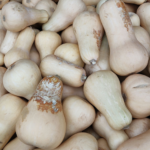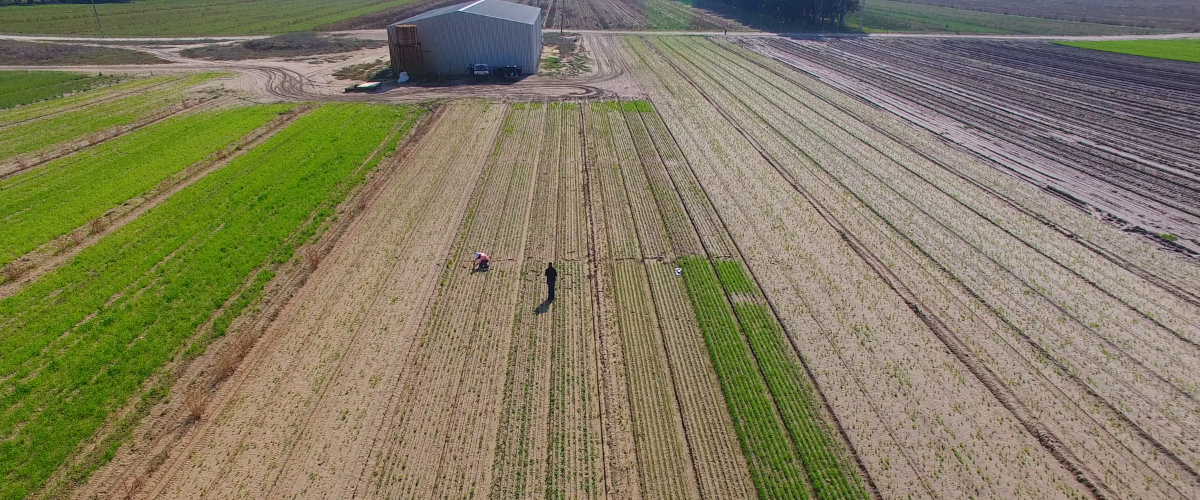
New tech offers promise on pumpkin brown etch puzzle
28 May 2025
A timely reminder of the importance of collaboration in the industry
28 May 2025The deep, sandy soils of Western Australia’s Swan Coastal Plain are among the most infertile in the world. They’re also where many of the state’s vegetables are produced, and growers have long struggled with the low ability of these soils to retain nutrients or moisture.
More than 60 percent of irrigation water and nitrogen fertiliser applied to vegetables on the sandy soils of the Swan Coastal Plain can potentially leach past the rootzone. The story’s not much better for phosphorus or potassium.
Against that backdrop, input costs continue to grow, water allocations tighten, and concerns about fertiliser runoff into waterways and wetlands increase.
In an effort to address this problem, Western Australia’s Department of Primary Industries and Regional Development (DPIRD) has launched a new levy-funded project to develop a system for capturing leached nutrients and irrigation water from below the crop’s root zone, and recycling this water back onto crops as irrigation.
The project, which runs until February 2030, will investigate the use of geomembranes installed below the root zone of crops to collect leachate and divert it into dams for reuse.
“Most of the vegetables in WA are growing in sandy soils, and we’re talking about sandy soils with a typical 2 percent clay content,” says Dr Valeria Almeida Lima, the DPIRD research scientist leading the project.
“Think beach sand; it’s structureless, and so that’s the main challenge.”
Dr Lima says that past vegetable trials have shown that 50-60 percent of the water and nitrogen fertilisers applied leach beyond the root zone. Nitrate in particular leaches very readily in sandy soils.
“So that’s not being utilised by the plants, and that incurs a loss for the farmer because you can’t really recover that,” says Dr Lima.
DPIRD has worked for many years on helping WA vegetable growers to improve their water use efficiency. Those approaches have largely focused on applying water and fertiliser based only on timely plant demand to minimise leaching.
But managing that is difficult across different crops, or even the same crop in different growing stages. It’s also complicated by rainfall.
Another angle that is being pursued is to lift the low clay content of the soil.
“Some growers are working on increasing the clay content of the soils to improve water and fertiliser retention, but it’s not widespread,” says Dr Lima.
“We do have researchers working on that area, identifying good amendments that we can add to the soil to increase that retention of nutrients and water. So, we’re working on different fronts.”
Dr Lima proposed a different approach, however.
“The challenge I proposed to my supervisor was, well, what if we just collect everything?” she says.
“It sounded like a crazy idea, but it’s been three or four years in the making before this project was approved.”
Collecting the water and fertiliser leachate has a number of benefits. Most obviously, if growers can collect it, they can reuse it, avoiding the loss of increasingly expensive inputs.
An additional benefit that’s relevant to growers on WA’s Swan Coastal Plain is the reduction of fertilisers entering groundwater.
Many of WA’s vegetable growing centres in the state’s southwest are close to sensitive wetland environments. Those around Perth sit atop aquifers that supply half of the city’s water.
How it will look in the field
The way Dr Lima envisions this idea being applied in the field is with an impermeable membrane placed underneath the plants, with draining pipes taking the collected leachate to a dam or holding tank.
The first step is to determine the spacing of the pipes, and what the impermeable layer should be made of.
Dr Lima says the project is looking at placing drainage pipes at a depth of around 70cm to 1m, and will use computer modelling to determine the final depth.
“The challenge with the drainage system design is how deep you place your pipes and how far apart you place them,” she says. “That’s what we’re hoping to design with some the help of some modelling.
“The models have the capacity to simulate the yield of the crop that you’re going to have, the quality of the water in terms of salinity, nitrogen recovery, etc.”
The next step is figuring out the best way to insert the membrane under a field.
“Depending on what we decide is going to be the best depth for our soils, we’re going to remove a deep layer of soil and place an impermeable layer underneath like a geotextile membrane,” says Dr Lima.
Once the leachate water is taken out of the field with the drainage pipes, it will be stored in a reservoir of some sort and reused.
“The reservoir will depend on if the property already has a dam, then we can redirect that water to the existing dam, or we can calculate how much of a reservoir you need for that system,” says Dr Lima. “And then we recycle that water back as irrigation.
“The ins and outs and the technical features of it are yet to be determined during the project.”

A soil pit profile of the pale deep sands in WA’s Swan coastal plain. ©WA Department of Primary Industries and Regional Development.
A new way of looking at drainage
While sub-surface drainage systems are not new, they’re typically installed in heavy, waterlogged soils.
“Normally when you drain, you have an impermeable layer, like a clay layer, that would prevent water going deep down into the soil profile, so it will accumulate and build up,” says Dr Lima.
“In our case, because we’ve got sandy soils, we must install an impermeable layer.”
The project will test a number of different materials to determine their suitability for that layer. Dr Lima says the team will draw inspiration from sports fields, which often have similar drainage systems, particularly under artificial turf.
Using impermeable membranes under an entire field is a new concept for horticulture. Research from Michigan State University in the US has installed polyethylene membrane in U-shaped strips
directly under a crop’s root zone, but not across the whole field. That research demonstrated a nearly three-fold yield increase for corn and cotton.
US research in the 1960s trialled the use of subsurface asphalt barriers to improve sugar cane yields in sandy soils, demonstrating a 50 percent increase in yield and a two-thirds reduction in irrigation requirements. A similar approach has had anecdotal success under kiwifruit vines in South Australia.
None of these earlier systems have incorporated a drainage system, however, as proposed by this project.
Future field trials
While the first stage of the project will develop the design of the system, the second stage will deploy the system in a proof of concept, small-pilot scale trial.
This will include a subsurface geomembrane barrier, drainage collection system, water storage tank, water treatment and recycling systems. Over two years, the trial will grow a range of vegetable crops, including brassicas, celery, and lettuce, to determine the effect of recycled water on crop growth and management procedures.
“That’s when we’re going to really have numbers quantified for the improvements in water use efficiency, fertiliser use efficiency, the microbiological and chemical composition of the water and how safe it is,” says Dr Lima.
“We also want to check the economic feasibility of the system. After we’ve assessed all of that through the pilot scale in years two and three of the project, we’re going to assess if this is worth going ahead with a trial on a larger area.”
If the pilot results support it, the final two years of the project will extend to a farm trial, working with a vegetable grower on the Swan coastal plain to see how the system performs at a commercial level.

